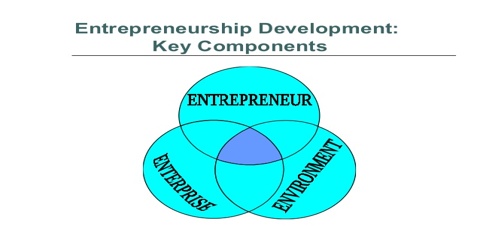Training personnel is necessary for successful entrepreneurship development – Explanation
Entrepreneurship does not appear instinctively. Rather it is the result of an energetic procedure of interaction between the person and the environment. Many entrepreneurs seem to view employee training and development as more optional than essential. A viewpoint that can be costly to both short-term profits and long-term progress.
The primary reason training is considered optional by so many business owners is because it’s viewed more as an expense than an investment. This is completely understandable when you realize that in many companies, training and development aren’t focused on producing a targeted result for the business. As a result, business owners frequently send their people to training courses that seem right and sound good without knowing what to expect in return. But without measurable results, it’s almost impossible to view training as anything more than an expense.
Now contrast that approach to one where training’s viewed as a capital investment with thoughtful consideration as to how you’re going to obtain an acceptable rate of return on your investment. And a good place to start your “thoughtful consideration” is with a needs analysis.
As it relates to training and development, a need analysis is really an outcome analysis what do you want out of this training? Ask yourself, “What’s going to change in my business or in the behaviour or performance of my employees as a result of this training that’s going to, help my company?” Be forewarned: This exercise requires you to take time to think it through and focus more on your processes than your products.
As you go through this analysis, consider the strengths and weaknesses in your comply and try to identify the deficiencies that, when corrected, represent a potential for upside gain in your business. A common area for improvement in many companies is helping supervisors better manage for performance. Many people are promoted into’ managerial positions because, they’re technically good at their jobs, but they aren’t trained as managers to help the subordinates achieve peak performance.
Determining your training and development needs based on targeted results is only the beginning. The next step is to establish learning dynamic for your company.
In today’s economy, if your business isn’t learning, then you’re going to fall behind. And a business learns as its people learn. Your employees are the ones that produce, refine, protect, deliver and manage your products or services every day, year in, year out. With the rapid pace and international reach of the 21st-century marketplace, continual learning is critical to your business’s continued success.
To create a learning culture in your business, begin by clearly communicating your expectation that employees should take the steps necessary to hone their skills to stay on top of their professions or fields of work. Make sure you support their efforts in this area by supplying the resources they need to accomplish this goal. Second, communicate to your employees the specific training needs and targeted results you’ve established as a result of your needs analysis.
Third, provide a sound introduction and orientation to your company’s culture, including your learning culture, to any new employees you hire. This orientation should introduce employees to your company, and provide them with proper training in the successful procedures your company’s developed and learned over time.
Every successful training and development program also includes a component that addresses your current and future leadership needs. At its core, this component must provide for the systematic identification and development of your managers in terms of the leadership style that drives your business and makes it unique and profitable.














